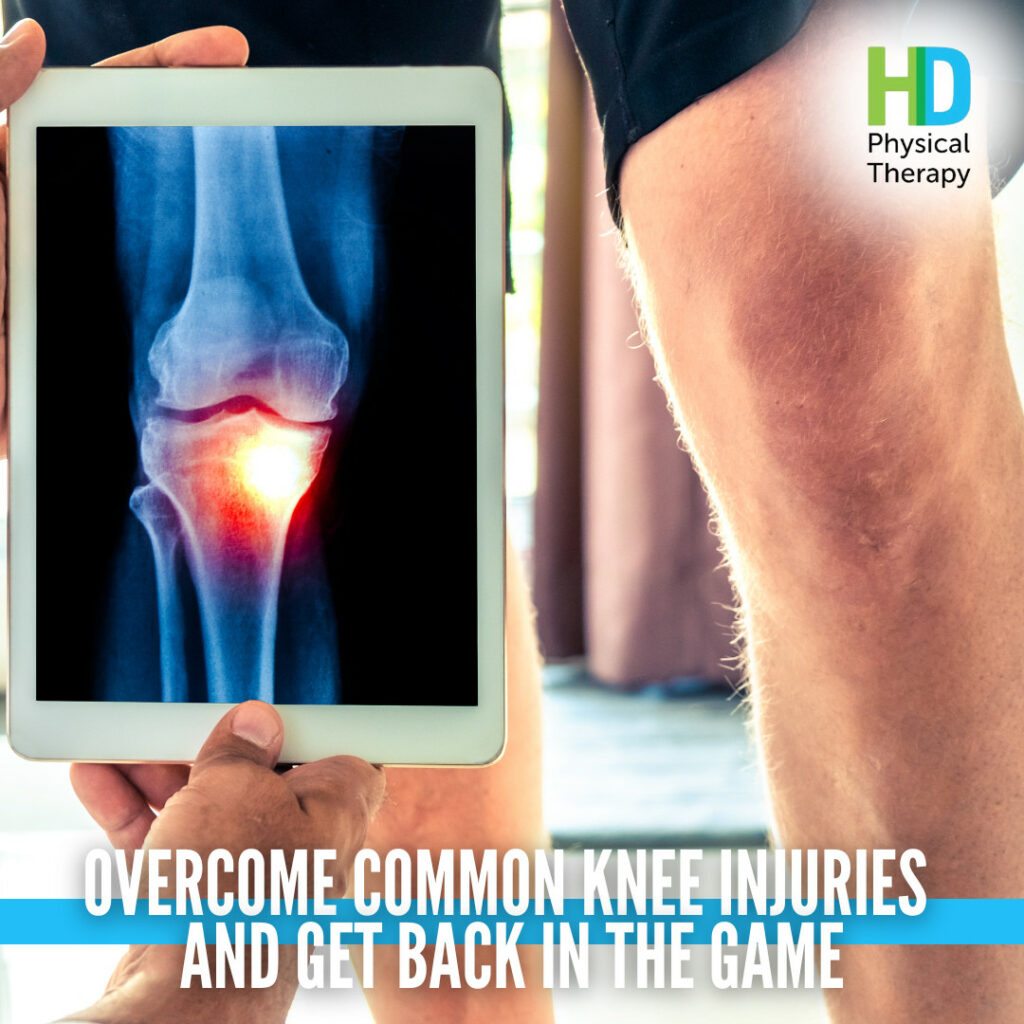
Whether you’re a weekend warrior, a high school athlete, or a professional, sports come with an inherent risk of injury, particularly to the knees. At H&D Physical Therapy, we see numerous patients who have sustained knee injuries while participating in sports. Understanding common knee injuries can help you take preventive measures and seek timely treatment when necessary.
1. ACL Injuries
The anterior cruciate ligament (ACL) is one of the most critical stabilizing ligaments in the knee. ACL injuries are prevalent in sports that involve sudden stops, jumps, or changes in direction, such as basketball, soccer, and football. An ACL tear can be devastating, often requiring surgery followed by extensive rehabilitation. Symptoms include a loud pop at the time of injury, severe pain, rapid swelling, and instability when trying to bear weight.
Preventive Measures:
Strengthening exercises for the hamstrings and quadriceps, along with agility training, can reduce the risk of an ACL injury. Wearing proper footwear and using correct techniques during play are also crucial.
2. Meniscus Tears
The meniscus is a C-shaped cartilage that acts as a shock absorber between your thigh bone and shin bone. Meniscus tears are common in sports like soccer, tennis, and basketball, where twisting motions and sudden pivots are frequent. Symptoms include pain, swelling, stiffness, and difficulty moving your knee or a feeling of your knee locking or giving way.
Preventive Measures:
To prevent meniscus tears, maintain flexibility and strength in the muscles around your knee. Proper warm-ups before activity and avoiding sudden, sharp movements can also help.
3. Patellar Tendinitis (Jumper’s Knee)
Patellar tendinitis, commonly known as jumper’s knee, affects the tendon connecting the kneecap to the shinbone. It’s often seen in athletes who perform a lot of jumping, such as volleyball and basketball players. Symptoms include pain at the front of the knee, especially during activity, swelling, and stiffness after exercise.
Preventive Measures:
Strengthening and stretching the quadriceps and hamstrings are key to preventing jumper’s knee. Ensuring proper landing technique and gradually increasing the intensity of your workouts can also reduce the risk.
4. IT Band Syndrome
The iliotibial (IT) band is a thick band of tissue that runs from the hip to the shin on the outside of the thigh. IT band syndrome is common in runners and cyclists and is characterized by pain on the outside of the knee. The pain usually worsens with activity and improves with rest.
Preventive Measures:
Regular stretching of the IT band, strengthening the hip muscles, and gradually increasing the intensity and duration of your workouts can help prevent IT band syndrome. Proper footwear and maintaining a balanced running form are also important.
5. MCL Injuries
The medial collateral ligament (MCL) runs along the inside of the knee and can be injured through direct impact to the outer knee, often seen in contact sports like football and hockey. Symptoms include pain, swelling, and difficulty bending the knee.
Preventive Measures:
Strengthening the muscles around the knee, particularly the quadriceps and hamstrings, can help protect the MCL. Wearing knee braces during high-risk activities may also provide additional support.
Knee injuries are common in sports, but they don’t have to sideline you for long. At H&D Physical Therapy, we specialize in treating and rehabilitating knee injuries to get you back in the game as quickly and safely as possible. If you’ve experienced a knee injury or want to learn more about injury prevention, contact us today to schedule an appointment. Remember, taking care of your knees now can prevent long-term issues and keep you active for years to come.
You must be logged in to post a comment.